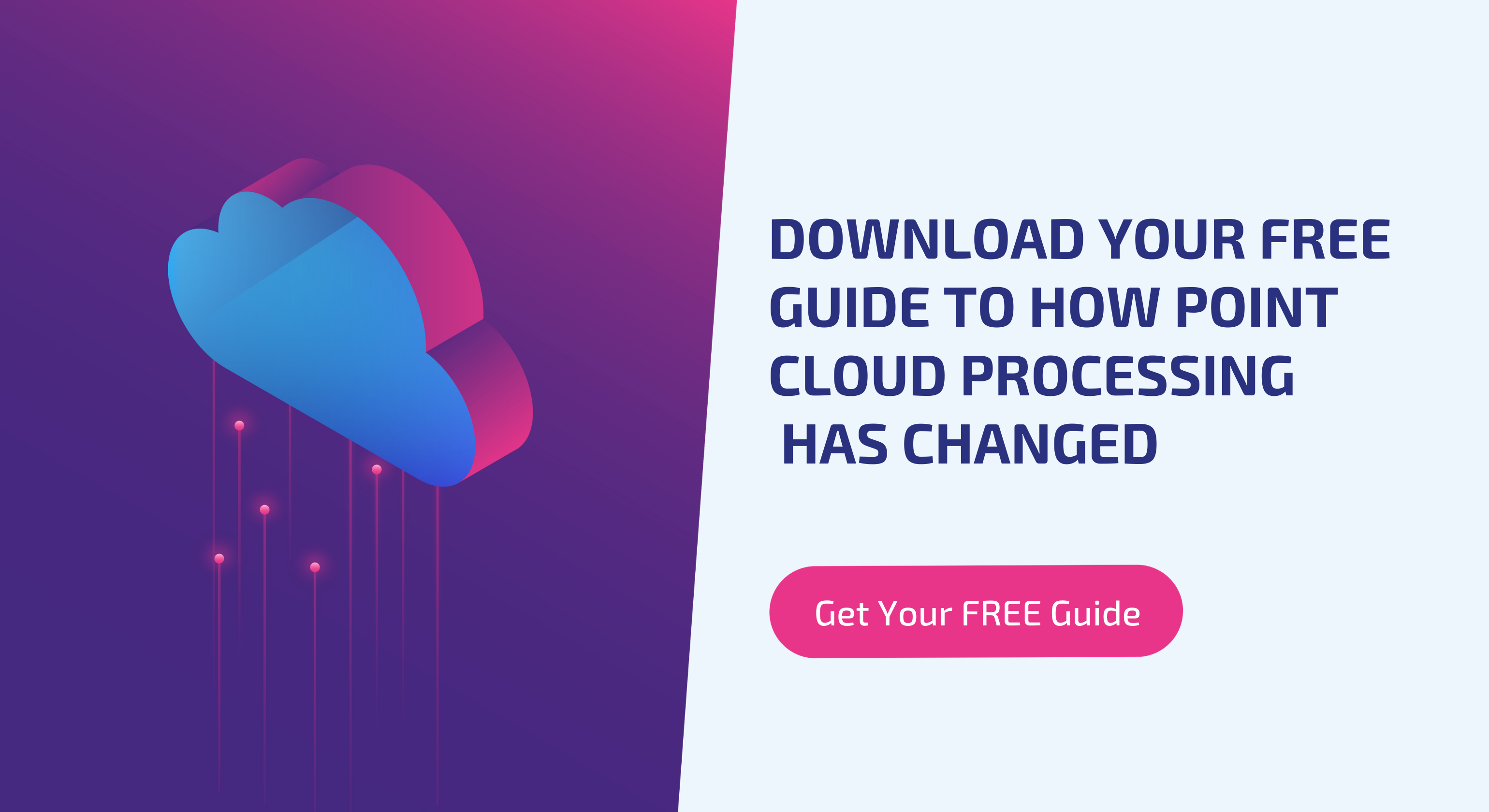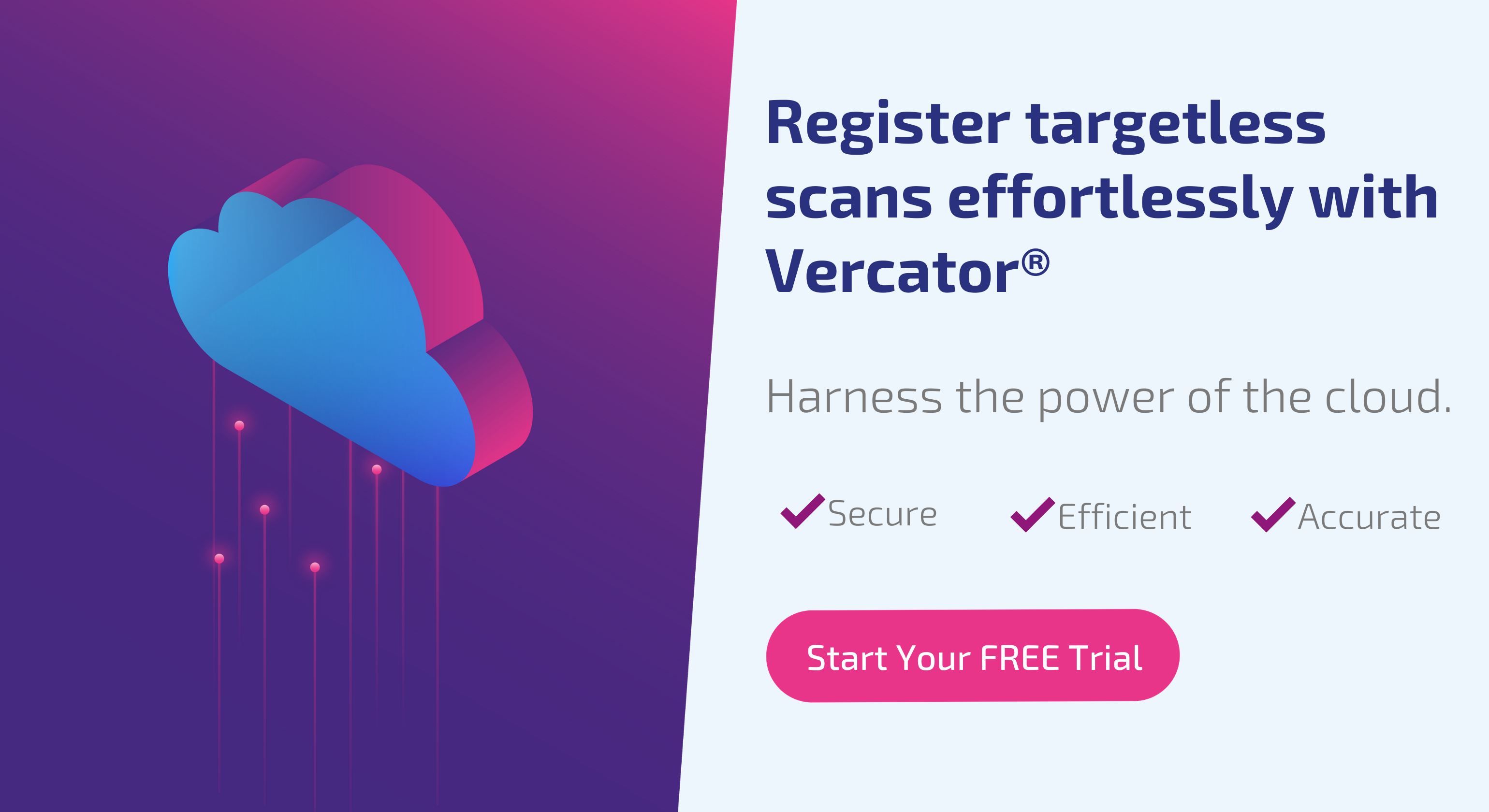Is surveying ready for the cloud?

The cloud has become a pervasive part of modern life. However, there are industries that have been left behind — surveying is one of those. Surveying, like every industry stuck with on-premise hardware, relies on applications with huge bandwidth demands, creating latency issues that overwhelm the benefits of the cloud.
Ironically, these same compute-demanding applications stand to benefit most from what the cloud has to offer: infinite scalability. The problem has centred around expanding bitrate access, and creating automated and robust processes able to scale.
We will argue that two things have occurred. One, network infrastructure and cloud connections have advanced to the point that bandwidth is far less of an issue than before. Two, survey technology (particularly registration algorithms) have changed to the point that they are more suited for the cloud than ever before.
Ultimately, it is time for surveyors to embrace the cloud and start thinking about the process improvements and technology investments they need to make in order to stay competitive in 2020 and beyond.
Getting the cloud ready for laser scanners
Internet speeds have risen dramatically over the last decade — this should be obvious to anyone who regularly uses a computer. And if you are still wondering about this, “the cloud” and “the internet” are the same thing.
“The cloud” was simply coined to discuss the use of the internet for functions that more directly mirror those undertaken by standard computers. However, when it comes down to using the internet to view a webpage, save a Google Doc or host an entire application, the same basic thing is happening. Remote computer resources are processing the workload and the end result is relayed to you through a WAN (wide area network) — what we generally call the internet.
The processing capabilities of this cloud system, and the ability to deliver that bandwidth through remote and wireless connection, continues to grow. 3G networks were capable of 7.2 Mbps download speeds. Modern 4G connections can deliver 300 Mbps. 5G is just around the corner, and promises to create 10 times the number of capabilities on offer now. Networked connections are even faster. These modern transfer rates are high enough that even the largest datasets can be transferred online when the right investments have been made.
Processing vs modelling in the cloud
Both processing and modelling are bandwidth-heavy tasks, and both stand to benefit from cloud deployments. Flexibility of access and remote editing are of primary concern when it comes to visualisation and modelling software. There have been a number of developments in this field, ranging from big brands like AutoDesk to smaller companies like Solv3D investing in cloud-capable modelling and visualisation programs.
Although remote access is of critical benefit to visualisation and modelling software, mobile access is not so critical. That means the ability to rely on standard WiFi and LAN connections, something that has accelerated the development of this kind of software.
For processing and registration, the challenges and benefits are larger. Coarse registration is the first step in the process of turning raw point cloud data into a usable deliverable. Getting started on that in the field can accelerate the entire process. However, to do that, you are stuck relying on mobile connections. This is a problem that has been functionally resolved, and will only continue to increase in capability — it is simply something that stunted the development of dedicated cloud-registration capabilities until relatively recently.
Registration also requires the execution of a huge number of steps — looking at a large number of scans and aligning each with great precision. There has always been the possibility here of parallelising tasks and executing them simultaneously. When expanded into the cloud, the amount of simultaneous computing power available is infinitely scalable — on-demand. Functionally, this delivers the possibility of registering a very large number of scans simultaneously. Creating solutions that are robust enough to do this automatically is what has historically stood in the way.
Getting laser scanners ready for the cloud
When laser scanners first hit the market in the mid-1990s, they were temperamental machines. The software required to register point cloud data sets produced by the scanners needed to be built around the idiosyncrasies of the scanner. As a result, the industry produced multiple, relatively closed-ecosystems for the registration of scans, and hardware manufacturers became the primary providers of software solutions.
Ultimately, the requirements of laser scanning hardware and software are not the same. Disaggregated markets with a large amount of specialised competition generally progress at an accelerated rate. This is something we have seen since scanning hardware has become standardised to the point that third-parties could routinely invest in developing software solutions for the hardware produced by other companies.
Advances in point cloud registration
Point cloud registration has long been a stumbling block in the processes of taking raw point cloud data and turning it into usable deliverables. Registration can be slow, unreliable and require multiple manual cross-checks. This is not an impediment to the cloud specifically, but old-style registration solutions either demand the use of point-reducible targets in the field, or limit your ability to take full advantage of the processing power offered by the cloud.
A modern solution is to split registration into multiple stages — addressing rotational alignment first, and then using 2D point density algorithms to achieve vertical and horizontal alignment. This can accelerate processing time by 40%-80% and remove manual steps by delivering a more robust outcome.
These modern registration algorithms also parallelise actions, making it simple to undertake specific actions within coarse registration simultaneously. Using traditional hardware, multiple scans can be registered simultaneously by taking advantage of multi-thread and multi-core functions. In the cloud, this can scale almost infinitely — theoretically creating the possibility to simultaneously register scan sets of any size.
The cloud is here: surveyors need to embrace change
Changes to the cloud, to laser scanning hardware, and to software, mean that the cloud is now able to deliver end-to-end solutions for survey technology. That does not remove the need for on-premise hardware, but it does create new possibilities for how teams can collaborate, and how processes are undertaken.
Remote access, file sharing and collaborative editing are all interesting possibilities when it comes to remaking team workflows and client relationships. Just as interestingly, processing changes create huge efficiency increases that impact the kinds of projects that are economically viable. There are whole possibilities for new ways to engage with workflows, deliverables and outcomes.
One change that is already starting to occur is the greater integration of survey teams in construction projects. Using reality capture technology to inform BIM (Building Information Modelling) and even scan stages of projects to compare output with delivery.
The possibilities for innovation delivered by a more open scanner marketplace means that the scaling potential of the cloud is truly set to transform the levels of efficiency within surveying. It is up to you to start thinking about creative applications. Those who change first will benefit most from new technology and new ways of work.
Tags: surveying


